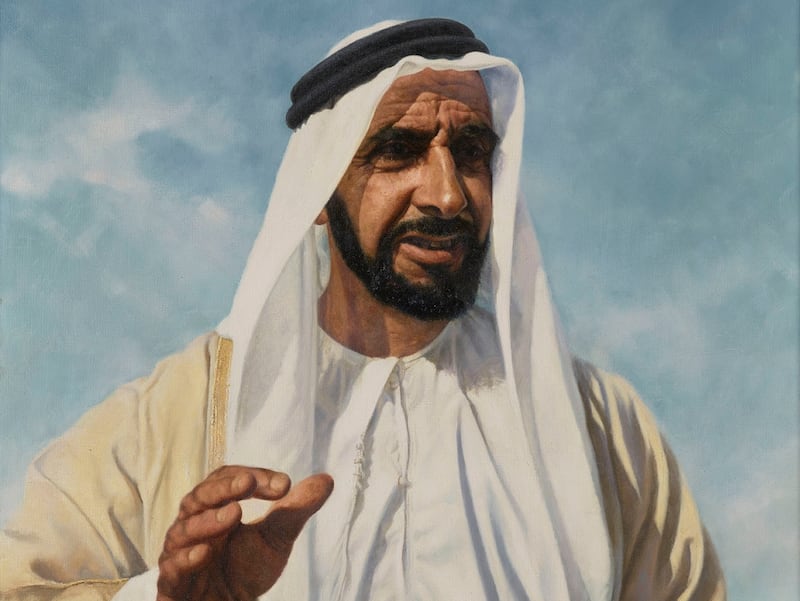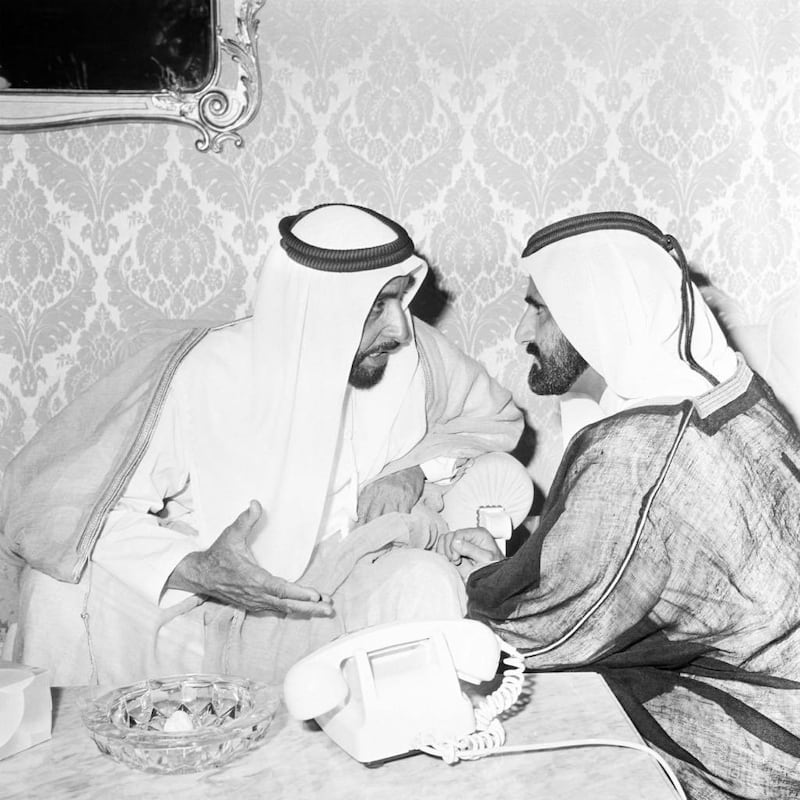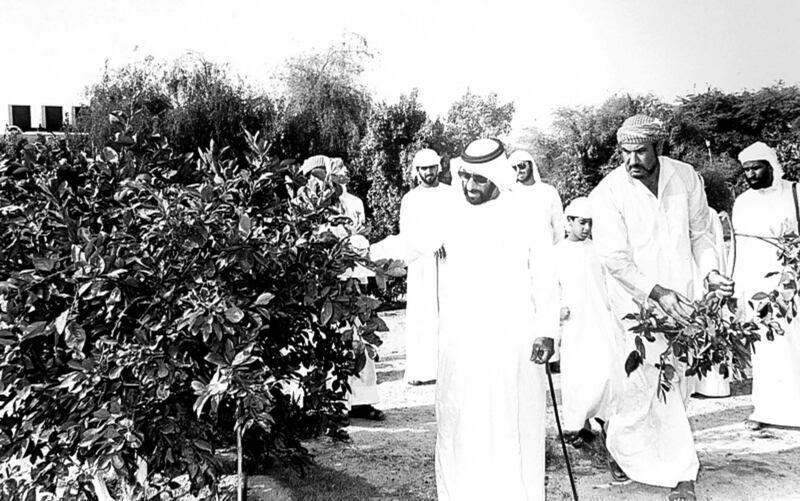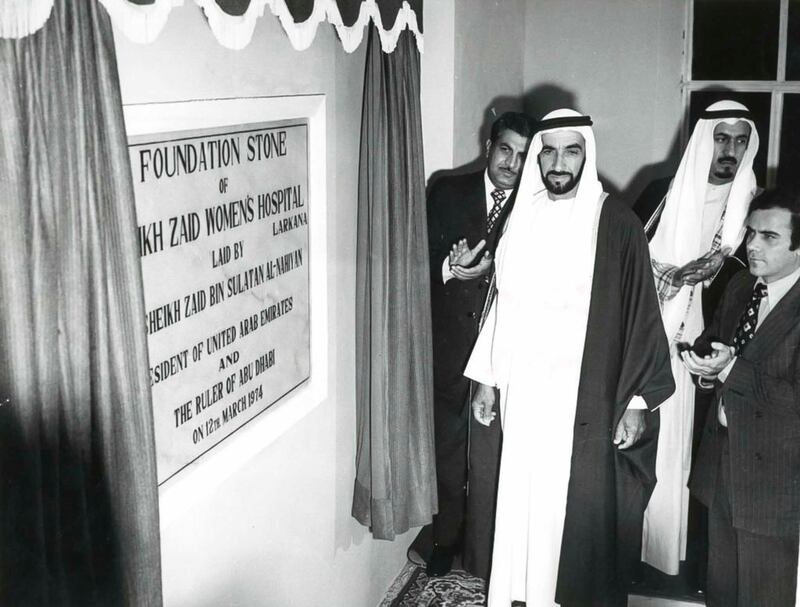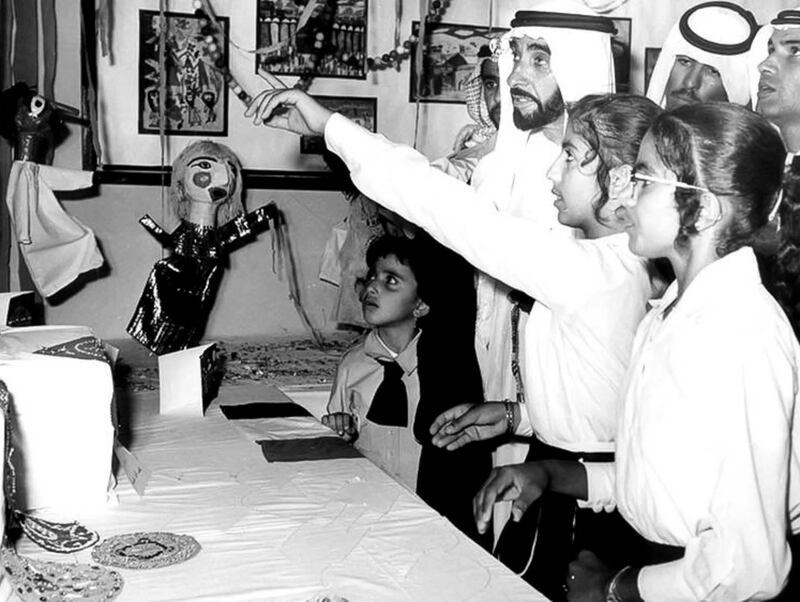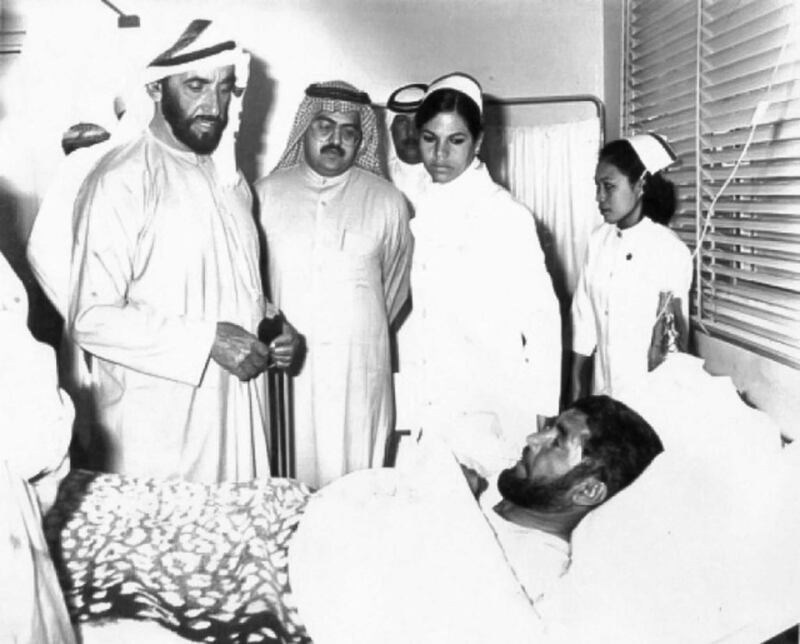The portrait is unmistakably Sheikh Zayed at the height of his powers, his face and arms animated by the preparations that will soon lead to the creation of the United Arab Emirates.
The painting, completed in 1970 by the noted British artist and conservationist David Shepherd, hangs on a wall of the UAE Embassy in Belgravia, London.
Five decades later, the current ambassador, Mansoor Abdulhoul, decided it was time to learn a little more about the artwork and the man who created it.
To help him, a meeting was arranged at the embassy with Shepherd’s daughter, Melanie, and granddaughter Georgina Lamb.
“The embassy has had the painting for many years but they didn’t have any background or history on it,” Ms Lamb tells The National. “So when they asked us, I rather cheekily asked if we could come and see it because I had never actually seen it.”
Neither had Ms Shepherd, as it transpired. The work was commissioned by what was then the Abu Dhabi Consulate, probably in 1969, when she was a child and Melanie has no memory of it.
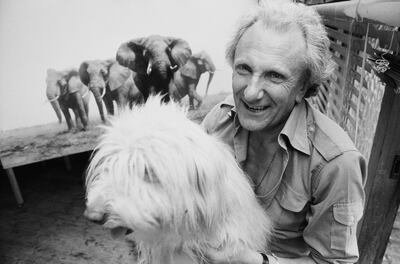
Best known for his paintings of African wildlife, especially elephants, Shepherd, who died in 2017, was also a gifted portrait artist.
He was particularly proud of three works, of which the portrait of Sheikh Zayed was one, “almost more than all the wildlife paintings”, Ms Shepherd says. “Over the years, he loved doing the portraits because it was something different.
“It’s amazing, very atmospheric. It’s not like a standard stodgy portrait. It’s very animated. It’s a wonderful portrait.”
The original plan was to fly Shepherd to Abu Dhabi where Sheikh Zayed would pose for the portrait, as arranged by Sir Hugh Boustead, a former British political agent and a friend of Sheikh Zayed and the artist.
What happened instead was recounted by Shepherd in his autobiography, An Artist in Conservation. Things got off to an inauspicious start when he was deposited on an airfield by a Kuwait Airways 707 while his canvas, easel, frame, luggage and toothbrush journeyed unexpectedly on to Karachi.
Shepherd, who then spent much of the following week in the gardens and majlis of Sheikh Zayed without an introduction, came to the conclusion that he would need to do the portrait from photographs.
On day eight, Sheikh Zayed approached Sir Hugh and the artist, who recorded that the ruler had "the most amazing presence".
"He graciously shook my hand, then sat down on the grass and immediately got into an animated conversation with Sir Hugh Boustead. They have known each other for years and are great friends …
"All I could do was point the camera in roughly the direction of Sheikh Zayed while he was talking ― and prayed hard. There is, I believe, a complication called 'parallax': if you put the lens too close, you cut off the top of the subject.
"It seems that this is what happened, because when I got the transparencies back from Kodak, I found that in 35 of the 36 exposures I had cut off the top of Sheikh Zayed’s head! But the last transparency was a fairly good one and I did the entire portrait from that."
Shepherd was, he says, subsequently told that Sheikh Zayed was "very pleased" with the result.
Finished back in Britain at the artist’s studio, the portrait shows the subject at half length, standing and talking with his right hand slightly raised as if emphasising a point, and with the desert, a blue sky and hazy clouds as background.
In a recent Tweet after the meeting with family members, Mr Abdulhoul described the work as something “that has always caught guests' attention and I’ve personally always been drawn to it”.
Shepherd was about 40 at the time of the painting while Sheikh Zayed, who would become the Founding President of the UAE in 1971, was in his early 50s.
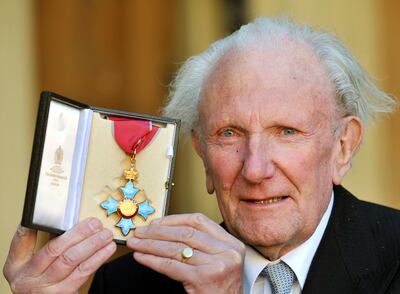
He began his career painting aircraft, and was the official artist for Britain’s Royal Air Force. He was in Aden when the RAF flew him to Kenya for his first wildlife painting, a rhino on a runway.
His works of African elephants and other wildlife made him a household name still popular to this day, with a new biography by his son-in-law J C Jeremy Hobson published only last month.
Shepherd’s love of wildlife extended beyond the easel. A passionate conservationist, his legacy continues through the David Shepherd Conservation Foundation which raises awareness about the need to protect wildlife and their habitats.
The meeting at the UAE Embassy was an opportunity to explain the foundation’s work by Ms Lamb, who is the chief executive, and Ms Shepherd, who chairs its board of trustees.
Afterwards, Mr Abdulhoul tweeted: “Both David Shepherd and our founding father, Sheikh Zayed, had a deep love and respect for protecting animals and the environment; a value both men have been successful in instilling in future generations.”
